Fox Renderfarm Blog
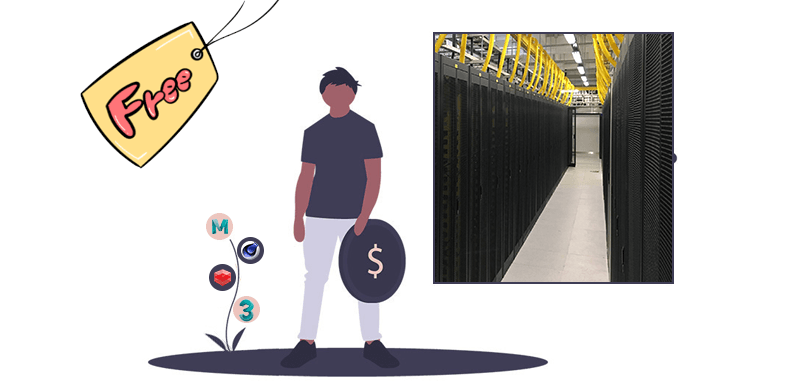
Any Free Render Farm for Cinema 4d, Maya, 3ds Max?
Maya Cloud Rendering
I think you always search for a free render farm for Cinema 4d, Maya, 3ds Max, but you will find that a completely free render farm does not exist, to be honest, most of the platforms needs to charge due to the reasons below.1. Hardware costThe bigger the render farm network, the quicker the rendering speed. According to the top render farm companies such as FoxRender****farm, they have over 30,000 physical servers, you can calculate the hardware cost.2. Maintaining CostNeed to rent a room in the data centre to place all of the rendering nodes. It would also be a large expense every year.3. Human Resource CostNeed a lot of specialists in customer service, technical support, research & development, marketing.However, you can find out which render farm is the cheaper one, at the same time, you can get a free trial from the render farm. I would like to introduce Fox Render****farm, the best cloud rendering service in the world. It has high compatibility, supports most mainstream software and plugins, including 3ds Max, Maya, Arnold, V-Ray, Redshift etc.Fox Render****farm is a leading cloud rendering service provider in the industry. Since the operation in 2011, Fox Render****farm has earned a good reputation for its quality performance, great customer service, and flexible pricing scheme. With over 20 years of experience, the pioneering core team served more than 400,000 users and top leading visual effects companies and animation studios from over 100 countries or regions, clients including multiple awards and Oscar winners.Web-based Cloud Rendering PlatformThe picture is the web-based interface of the platform,1. The upper right corner is message, guide, setting and account info;2. The left is rendering steps;3. The middle is the dashboard of render info.Desktop ClientThe picture is the desktop client interfaceReady for Windows and Linux users;Drag-and-drop batch submission;Submit your jobs inside your 3D software.Ready For WindowsSupported Software:Maya 2015 64bit+ / 3ds Max 2014 64bit+Fox **Renderfarm**'s Data Center is powered by 100% green, renewable energy:Hydro Wind turbinesPUE 1.2The users of Fox **Renderfarm are making a big contribution to reducing greenhouse gas emissions and protecting our environment.If you want to learn more about Fox **Renderfarm, we offer a US$25 free trial to new users, welcome to take an experience. Enjoy your cloud rendering journey with Fox **Render*farm!

Get Started on Game Modeling with 3ds Max Modeling Tips
3ds Max Tutorials
The reason why 3D is called "3D" is because it takes a 2D profile of an object and extrudes it along a certain path, forming complex 3D objects. Different shapes can be applied to different segments along the same path. This transformation path is called loft modeling. Today, Fox Renderfarm, as a leading cloud rendering service provider and render farm** in the industry, will introduce the basic modeling techniques 3ds Max loft modeling to you.Lattice ModelingMaya's powerful lattice modeling tool is incredibly powerful but often overlooked by beginners. The lattice allows you to efficiently make overall changes to high-resolution models, avoiding the tedious task of manipulating hundreds or thousands of edges and vertices individually.Despite being a powerful tool, lattice modeling is often missed by beginners, partly because it is located under the Animation tab rather than the Polygon Modeling tab in Maya's interface.Image from Internet, copyright of the original authorSoft SelectionAre you tired of moving each vertex individually?Just like the lattice modeling, the soft selection feature allows you to efficiently modify a region of a model by setting a controllable falloff radius for each vertex, edge, or face. In other words, when soft selection is enabled, selecting a vertex and translating it in space will also affect the surrounding vertices (the degree of influence is determined by the falloff radius you have set).Soft selection is particularly useful for modeling organic objects such as skeletons, muscles, and faces. It helps you achieve smoother transitions and deformations between different parts of the model.Image from Internet, copyright of the original authorThe Duplicate SpecialHave you ever been frustrated while modeling objects with regularly spaced elements, like fences? The Duplicate Special feature allows you to create multiple copies of an object and translate, rotate, or scale each instance individually.For example, let's say you need to model a Greek pillar with a series of regularly spaced relief units encircling its surface. In this case, after creating a single relief unit, you can find the central axis of the cylinder and use the duplicate special feature to evenly distribute and replicate each relief unit, making it easy to complete the modeling process.Image from Internet, copyright of the original authorThe Relax BrushBeginners often tend to end the modeling of organic models with a "blocky" appearance. Although Maya does not have a complete set of sculpting tools, it does have some basic sculpting brushes, with the most useful one being the Relax Brush tool.The Relax brush will average out the spacing between the vertices you brush over, resulting in a smoother surface without compromising the model's overall shape. If you are modeling a facial model, for example, you can use the Relax brush to make the blocky face appear more like a smooth skin surface.Find mesh tool under the polygons menu, then sculpt geometry tool, click on the little square behind this option, and find sculpt parameter under properties, locate relax brush, and then go back to the 3D view and brush the vertices you want to smooth.Alternatively, you can select the object you are currently modeling, hold down the right mouse button until a menu appears, and then choose Paint -> Sculpt. In the Sculpt Parameters, select the Relax Brush. You can also modify the brush radius and strength in the brush options tab to control the brush effect.Image from Internet, copyright of the original authorSelection SetsHave you ever had this experience: After spending a long time carefully selecting complex faces, edges, and vertices, and performing a series of operations, you unselect them to start working on something else. Then you realize that you need to make further adjustments to the large area you originally selected, but you have already canceled your previous selection. Now you have to go through the frustration of manually clicking and selecting points, edges, and faces again.Actually, this can be avoided. Maya allows you to save selection sets so that you can quickly and easily activate them later on.If you find yourself repeatedly selecting the same points, edges, or faces, or if you have just spent a lot of time selecting a large area and suspect that you may need to select that area again in the future, use the Command Selection Sets to save it.Select the desired points, edges, or faces, then go to Create -> Quick Select Sets. Name the set and click "OK." (If you want to find it on the toolbar later, click "Add to Shelf"). To quickly select this area in the future, simply go to Edit -> Quick Select Sets and locate your named selection set in the list.Interact with Others MoreMany beginners often overlook this step and rely solely on hard work. While professionals in the workplace can easily communicate with colleagues in the industry, it can be more challenging for beginners.Beginners can exchange experiences with classmates who are learning together, or engage with unfamiliar peers on social platforms and other forums.Regardless of the approach, it is always beneficial to look at other people's work. Hopefully, with the guidance of these tips, everyone can achieve great success.If you have problems with slow 3ds Max rendering on your own computer, you can use a 3ds Max render farm** that offer fast cloud rendering service to speed up your 3ds Max rendering and meet your project's delivery date.Source: aliyun
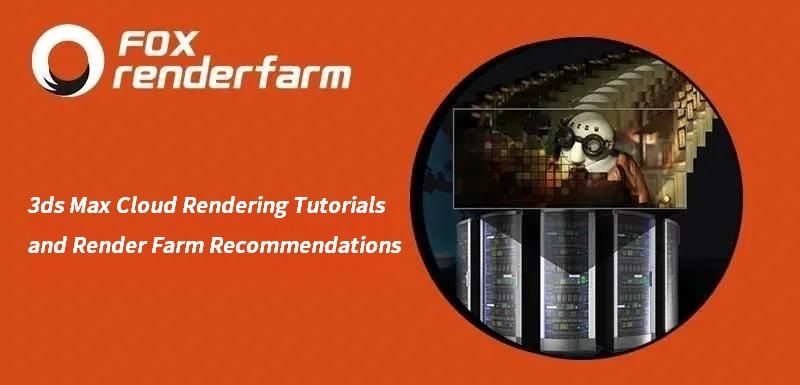
3ds Max Cloud Rendering Tutorials and Render Farm Recommendations
3ds Max Tutorials
3ds Max is a 3D professional modeling software, animation and rendering application builder, formerly 3D Studio and 3D Studio Max, used to create 3D animations, models, interactive games and visual effects for the entertainment industry. 3Ds Max plays a big role in designing the 2D cross-sectional shapes of 3D models. It can bring characters to life by using a special feature called inverse kinematics that can connect the different components of a character together. So whether you are an architect, a product designer or an illustrator, using 3ds Max to create your projects is a good choice for you. The 3D models are usually converted to CGI through a rendering process.We see a lot of beautiful results after the project is rendered. But rendering in 3ds Max can sometimes take a long time and it doesn't have much to do with your system itself when it comes to rendering. Long rendering times can be affected by many factors, so for creators who use 3ds Max as their primary tool, speeding up 3ds Max rendering times is a huge relief.3ds Max cloud rendering is a useful way to speed up rendering. Many people have only heard of cloud rendering but don't know what it is or how to do it. In fact, cloud rendering, a cloud service that relies on cloud computing, can also be called an online render farm. Fox Render****farm is a powerful 3ds Max cloud rendering farm, with tens of thousands of rendering machines supporting CPU and GPU rendering, serving over 400,000 users around the world. The following is the tutorials of 3ds Max cloud rendering at Fox Render****farm.Tutorials for Using 3ds Max Cloud Rendering3ds Max Cloud Rendering Web Submit TutorialStep 1. Preparations for 3ds Max web submission:1.1 Register to get an account with $25 free trial.1.2 Compare the local and could asset directories.Step 2. 3ds Max web submission process (4 steps: submit > analyze > render > download).2.1 Click the “Submit” button on the left, select the software for submission > set a project path (Note: this project path contains all the materials used for the Max file) > select the document for rendering, then click “Continue”.2.2 Select software version and hardware configuration corresponding to the file (Note: selection of the rendering system), click "Go Analysis", and wait patiently for the analysis to complete.2.3 Click the job with “Analysis Done”, set render parameters and then submit it for rendering (Note: the actual rendering starts only at this job)2.4 On the rendering page, click the job > export the file > download.3ds Max Cloud Rendering Desktop Client Submit TutorialStep 1. Start the desktop client, select the platform to log in, and enter the main interface.Step 2. Drag the max file to the job area in the client, thus to trigger the submission and start the scene analysis.Step 3. Select software version and hardware configuration corresponding to the file, and click "Next" to enter the analysis page.Step 4. Click “Next” when the analysis is done (Note: corresponding prompt will appear in case of any error in the analysis results or warning thereof) and set render parameter setting (including: common settings and Vray settings).4.1. Common setting:4.2. Vray settings:Step 5. Click “Submit” to start the uploading. The rendering is automatically started upon the completion of submission, and hence the submission job is successful.That is all about tutorial of 3ds Max cloud rendering. If you have anything else you don't understand, you can consult the customer service or your account manager, but remember to sign up to get an account, and the benefit for new users is a $25 free rendering voucher. If you are a student or educator, you can get a bigger discount, check out our GoCloud Program. Fox Render****farm is always committed to providing better and more affordable cloud rendering services for everyone in the CG industry!
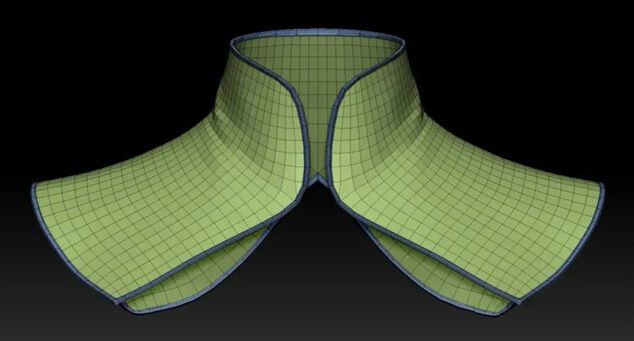
How to Create a Stylized Cheongsam Girl in ZBrush and 3ds Max (2)
3ds Max Tutorials
How to create a stylized Cheongsam girl in ZBrush and 3ds Max? In this article, the best render farm and cloud rendering service provider, Fox Render****farm will share with you the tutorial. For part one:How to Create a Stylized Cheongsam Girl in ZBrush and 3ds Max(1)High polygon model/face/hair/clothing wrinklesWhen you've carved to a certain extent, you're going to ZBrush to make a high-polygon model. First of all, I add a new hem to the model that needs to be added with subdivision carving. Most of the automatic hem of ZBrush can already meet our manufacturing requirements. If there is some dissatisfaction, it can also be matched with part of the edge ring hem of ZModeler.When carving wrinkles, I usually turn on the Lazy mouse function, which can make the carved lines more smooth, avoid intermittent lines, make the cloth look cleaner and more beautiful, and can also be matched with some Alpha brushes, so that the wrinkles are more detailed and richer.When making hair, it is recommended to use simple geometry first, with the SnakeHook brush to quickly make the outline of the hair, for the subsequent hair production to provide a good basis. When using the SnakeHook brush, you can also turn on Sculptris Pro mode in conjunction with it, so that there is no obvious distortion in some places where there is a large change.After adjusting the simple outline, you can use the hairbrush to brush the hair out in clusters. Before brushing the hair, make sure that curve mode is turned on, lock the starting point, and then it takes a lot of patience. Of course, the best way is to observe how the real person's hair twists so that the hair will naturally look good. Details need to pay attention to the scalp coverage and to avoid some places "bald" off. In this case, the hair production is not close to the tangent of the scalp, but first grows up, and then falls down. Paying attention to these details, the hair will naturally look good.Finally, we use the "Automatic grouping" in the "Polygon group" to get rich, well-rooted hair, and then use the Move Topological brush to pull out some of the hair and make small broken hair floating outside to make the hairstyle look more vivid and flexible.It should be noted here that the hair pulled out should still float away according to the direction of the overall hairstyle, do not let the separation distance or angle be too large, otherwise, it looks easy to fake or not natural enough.RenderingSo far I've only made models, not added materials. In this case, Keyshots are generally used for rendering, because the model without materials rendered by Keyshots will look more delicate and have a good light and shadow effect. Normally, I will first set a warm light main light source from 45° down from the upper left, and then match a cold light auxiliary light source from the back to the front from the right, so that the structure is more vivid.
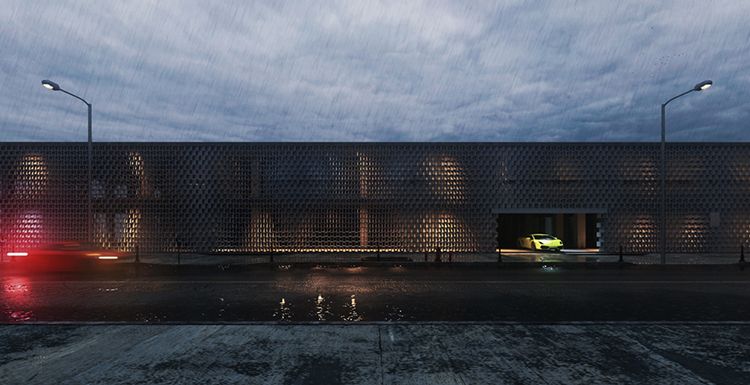
Rainy Scene Performance of Building Exterior
V-Ray for 3ds Max
The best cloud rendering services provider and GPU &x26; CPU render farm, Fox Render****farm will share with you a good 3D tutorial to make rainy scene.This is a rainy scene performance of building exterior, from 3D artist Han Shilin. The software used is SketchUp, 3ds Max, V-Ray for 3ds Max, Photoshop, and Substance Painter, etc.How to be "realistic"?"Realism" doesn't just give each material a very accurate parameter that can be applied to any environment, so that it can render a very realistic effect. It also refers to realistic performance = according to your own visual experience, controlling parameters to make the map in line with expectations.The difference between the two understandings is that the former has no control and expectation of the final result, and is based on the idea that "parameters are correct.".ReferenceThe reference picture is very important, this is an expectation of the final effect, such as light and shadow, atmosphere, composition. And it is recommended to combine all the reference pictures into one plate.In order to show a sense of tranquility and quietness, a darker, rainy weather was set. The architectural details of this scene are not many, the atmosphere of light and the treatment of the ground part are very important.ModelingGrasshopper makes the appearance, imports SketchUp to make the main body of the building, and then imports into 3ds Max, and rendered with V-Ray. The process is very simple.The important thing is to do a good job of layering, otherwise, it will become more troublesome when importing into 3ds Max.As for the composition, a very low angle was used, as much as possible to expose the ground material and the wider sky.TextureThe main body of the building is far away from the lens, so only ordinary materials are needed, and the texture of the materials can be maintained. Taking the skin material as an example, the rest of the building materials are very basic.Sidewalk and road eaves: indoor concrete texture package, because there will be a lot of dirt in the outdoor scene, so the concrete texture and the dirt texture are mixed together. The area in the close shot is relatively small, so the repeatability of the material is serious. Since it is a rainy scene, the roughness value is also very low.PS. The main building can be modeled in SketchUp and then imported into 3ds Max. The environment and settings of the scene are best created with 3ds Max because the SketchUp model will have some problems when imported into 3ds Max, such as the UV will be messed up.Performance details (Substance Painter draws some textures)From the perspective of the camera, the pavement greatly affects the picture, so its material is very important. You need to import this pavement into Substance to draw textures.Import the mesh file that needs to draw textures into Substance Painter.Remember to turn off the channels other than the natural color when drawing the natural color map. After drawing the natural color map, create a new layer and draw the bump.Then you can add some standing water to both sides of the road.There are many ways to draw. One of the simpler methods is to add a material to adjust a very flat height and then apply it several times with a dirt brush to get a better random effect. Because what to do is a rainy scene, there is no wet feeling. So adjust the level of the roughness layer.One thing to note is that if you want to get the same effect in 3ds Max as in Substance Painter when importing the texture, adjust the blur to 0.2. For sharper effects, lower it. In addition, the imported map gamma needs to pay attention to, the map color of the natural color is selected automatically, and the rest are all 1.0.Then it is relatively simple work and found some model-rich scenes from Evermotion's model library.Such as the middle and lower left cars. After that, I used V-Ray rendering in 3ds Max, and finally adjusted it in Photoshop.Fox Render****farm hopes it will be of some help to you. It is well known that Fox Render****farm is an excellent cloud rendering services provider in the CG world, so if you need to find a render farm, why not try Fox Render****farm, which is offering a free $25 trial for new users? Thanks for reading!
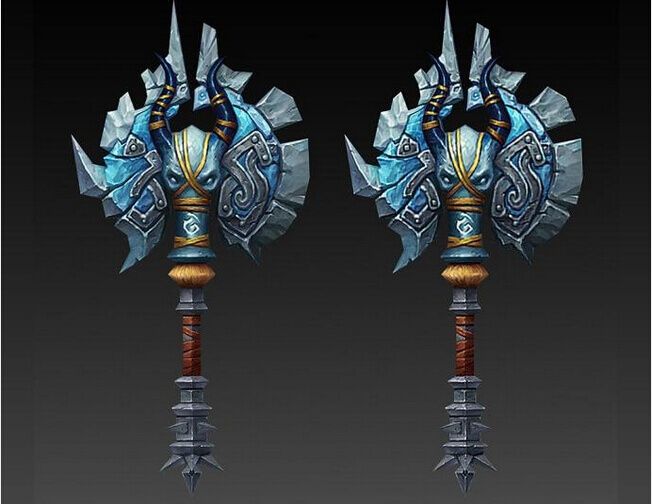
How to Make A Tomahawk in 3ds Max
3ds Max Tutorials
1 month rendered in 2 hours, the fastest GPU &x26; CPU cloud rendering services provider and render farm, Fox Render****farm still shares with you 3ds Max tutorials, how to make a tomahawk in 3ds Max.IntroductionHello everyone! What I want to share with you today is to use 3ds Max to make a tomahawk and share some skills and techniques used in the production process. This is a relatively basic tutorial, including modeling, sculpting, pbr texturing.ConceptThis tomahawk was inspired by a weapon concept image in "World of Warcraft". It looks cool and looks very beautiful. So I want to make it into a 3D version in my own way.In the concept drawing, I first observed the outline of the front and side and modified some details. These main structures are very important for making the model. We can see the white and black side profile in the figure below. The black is obviously more three-dimensional than the white.ModelingFirstly, I split the model into three parts, the handle, the main body, and the axe body on both sides. Each part is modeled in the most suitable way, and then merged. This part is very easy and simple to make this type of mode in 3ds Max.The axe body on both sides of the battle axe is very important, so its shape is very important. The thread exists for structure, so please add enough thread at the turning point, and pay attention to the thickness of the axe since it needs to have layers. Models that can be made separately, please make them separately. Use as few faces as possible, and make transitions as smooth as possible.UVsUV production can be divided into four parts,Plane projection: put the messy uv in a box.Dismantling: adjust the UV without stretching and saving space.Operation: solve stretching.UV placement: a. The UV of objects with a larger model can be enlarged, and the UV can be reduced if there is less texture information; b. Try to optimize the UV space, and then the seams.TexturingNow that the model is complete, we can start making textures. Firstly, I filled in the background color. For example, If the overall concept map is blue, fill it with blue. If the overall concept map is red, fill it with red.We can use the concept map for reference. As the background color, don't use too dark or too bright colors.The next step is to create a hand-painted texture. There is a concept map for reference, just follow it to draw it. When drawing, pay more attention to the light source. I want it to look like a cold light source illuminates from the upper left, so that it can have a good sense of volume. In this step, large blocks of colors and changes need to be drawn, and no details are needed.Next is the details. It should be noted that no matter what we draw, such as bandages, decorations, and bumps on the handle, we need to pay attention to the sense of volume.Final effert:

How To Make An Ancient Warrior Using ZBrush And 3ds Max(1)
ZBrush Tutorials
Fox Renderfarm, the best cloud rendering services provider and render farm**, will bring you a tutorial from 3d artist Mars on how to use ZBrush and 3ds Max to make an ancient warrior. Mars will use ZBrush and 3ds Max to make a character of a Japanese samurai and talk about some of the problems encountered in the production process. The whole production is divided into five parts: Introduction, 3D Modeling, UV, Texturing and Rendering.IntroductionThis Japanese samurai production case specifically used 3ds Max to make the initial model, ZBrush and 3ds Max combined to complete the high polygon sculpting and production, Marvelous Designer to make the cloth, Substance Painter complete the texture, and finally to use Substance Painter for rendering.ReferenceWhen creating a 3D artwork, whether it is realistic or stylized, preparing reference materials is one of the most important parts of the process. After seeing a samurai picture, I decided to make it into my own version and split some elements in the picture. You can see that the samurai in the concept map is mainly armour, and there are many weapons on his body. However, this armour's texture colour is relatively single, and the original painting only has the upper part of the display, so a lot of references must be found.The following is part of the reference pictures found when making samurai armour. Divide the model into different materials, find the corresponding reference, and create the corresponding folder to facilitate subsequent search and use.Character modelingFirst of all, according to the samurai drawing, I used a basic body model to modify, and may quickly adjust the character's body proportions, shape and movements.After making the basic things, I started to build the equipment in 3ds Max. There are three points to note:The size and proportion of the model.Some structures need to be extruded to make changes in the shape, and the edges of the model should be chamfered so that the edges do not look particularly sharp.Group according to different parts, and the naming and grouping of these models are clearly organized to facilitate the subsequent production management.After the basic proportions of the body are determined, you can make equipment for the character. Samurai equipment has sub-hard structure equipment, such as helmets, shoulder armours, weapons, etc., which can be built directly in 3ds Max. For other items like clothing, pants, etc. I plan to make them through Marvelous Designer. The pants and clothing calculated by Marvelous Designer will be more natural. You can adjust the details of the folds of the clothes through ZBrush later.Finally, combine all the things in 3ds Max to place and adjust the model together. When making the model, you need to pay attention to restore the shape and outline silhouette in the reference picture as much as possible.After the production of these basic models is completed, I first set up the models to facilitate subsequent production.For some hard-surface models, such as breastplates, the previous models are made more refined through some plug-ins or adding wires. However, it should be noted that try not to destroy the original structure of these models, but only add modifications to them. For things like clothes, it is best to put them into ZBrush for sculpting.Here I use pants as an example. First, I export the fabric checked by Marvelous Designer to ZBrush for sculpting, adjust the details, and then split the UV of the model through GUV tiling, and make textures on the pants through the noise.The intensity can be increased appropriately in ZBrush because the damaged details will be weakened when the normals are baked. My approach is to create a new layer to draw, and at the same time, I need to open the transformation target and open the storage transformation target.In this way, the strength of the texture can be adjusted as a whole to facilitate the modification, and the unsatisfactory parts can be restored by restoring the brush later.I need to adjust the number of faces of the model to create a low-polygon model for matching and baking with the sculpted model, so a low-polygon model can be directly adjusted and produced in 3ds Max. It is important to note that some concavo-convex structures can be made by baking, so some structures in the model can be directly deleted, and all the lines that the structure are deleted, which is the largest reduction in the number of models. Part of the sculpted model needs to be made by surface reduction in ZBrush or topology with TopoGun. The production of low-polygon models requires the number of faces to be as few as possible, the position of the line is reasonable, and there should be no more than quadrilateral faces.In part 2 of this tutorial, we’ll be going over the rest of the details of the production process.

How to Create Chinese Style Scenes in 3ds Max and ZBrush
ZBrush Tutorials
In this article, your trusted CPU &x26; GPU cloud rendering services provider and render farm, Fox Render****farm will share with you a production process about how to create Chinese style scenes in 3ds Max and ZBrush from 3d artist ZX.IntroductionThe project is created by a small team. It's also the first time they've done the scene independently. When they first saw the concept map, they thought it was beautiful and decided to make it a 3D version.Next, we'll show you the whole process and explain in detail the problems encountered in the project and how to solve them.We wanted to save production time as much as possible, so before we did it, all of the team analyzed the concept map together, and we decided that the UVs for those things could be shared, and those materials could be made with duplicate maps. The parts of the model, those that only need to be made in one copy, can be reused. We've assigned everything by type and map.And when making, we will give priority to the large model, from the whole to the part, the pre-production does not need to be too detailed, and finally is a number of various styles of small ornaments.So we've made some basic shapes, and then we've used this basic shape to build a large scene.Basic modelThe low model is made to determine the scale of the entire model and facilitate later work. At first, I ignored the small props and started with the big buildings. After the whole Hall was built, I carefully checked all the structural parts and there was no problem. Otherwise, after half of the production, it will be troublesome to modify these structural things. So the hall scale structure must be confirmed before making details.When the structure of the hall is finished, the number of faces of all models will not be too high, which will facilitate the subsequent engraving of the high model in ZBrush. I then divided all the models into several parts and distributed them to my team members for follow-up work. As long as everyone completes the work according to their assignment, it will save a lot of time when the later scene is assembled.After we finish the scene, we refine it on the basis of the low model, so as to ensure that the model scale will not have problems in the later integration. It is important to note that all high models maintain size uniformity and that all engraving details are consistent.Due to task assignments, it is necessary for someone to check everyone's progress to ensure that the project can be completed on time and that all models can achieve the same details.I sculpted two of these models as I made them, both starting with the basic ZSphere, and then converting them to polymesh3D. DynaMesh is used for carving, and the fewer faces the better in the early carving, and the better to adjust the shape.All that's left is some tedious work that requires a lot of patience. I spent a lot of time in TopoGun to get the best models and details. Of course, in the project, there are also members who learn to make while learning and learn to use new tools to speed up the project process.TexturingAs with the high model, all textures have to be consistent in color and texture, so some common base textures need to be made in advance. And, because it's a multi-person collaborative project, all progress sharing is important. So the production needs continuous communication, as far as possible to avoid repetitive work.RenderingFirst, it's an important step to integrate all the models into one scene. Especially for the large scene of multi-person cooperation, the name of the file made by each person must be good, and the shader in the file is named the same as the exported map folder, so as to facilitate the later search of textures and the replacement of maps.Three common types of lights are used, the main light source that simulates sunlight, a supplementary spotlight and a point light source to make up for too dark places. We started with Marmoset Toolbag, but we weren't satisfied with the results. Then we added some extra effects to the scene, ambient atmosphere and so on, and finally, we got the most satisfying effect.

3ds Max Tutorials: Semi-realistic 3D Game Scene Interior Production Sharing (2)
3ds Max Render Farm
Fox Renderfarm, as the best Maya render farm** and cloud rendering services provider, in the CG industry, the tutorial we shared for you this time is from the 3D artist Thepoly, on how to use 3ds Max and Maya and other software to make a semi-realistic 3D game scene interior production process.3ds Max Tutorials: Semi-realistic 3D Game Scene Interior Production Sharing (1)Taking the wooden table as an example below, first of all, we must determine the material to be sculpted and then look for the reference picture corresponding to it. Because the wood in the scene is too old, you need to find some pictures of old wood when looking for reference pictures, for example,The carving process needs to be combined with actual life, so as to achieve a more realistic effect. In this scene, the wooden table is a bit decayed, so the edge of the table will not be made into a hard and sharp right-angle structure, so you can use a brush to make the right-angle part of the edge more smooth when carving. Reflect the texture to be expressed. Coupled with appropriate deformation, it can more vividly increase the visual impact (the modified place is slightly adjusted with the Move brush).The wood in the scene has to make a sense of oldness, so cracks are a good way to show that the objects are worn out, and reference pictures are also needed at this time. For example, the cracks on the window plate can be carved according to the cracks in the reference picture. This can reflect the material better, more realistically, and faster.The final high poly showed as below:Low polygon model and bakingThe final low-poly model uses ZBrush to complete the reduction and then imports into Maya to make the final low-poly model. This can get the low polygon model faster, but the wiring will be less neat. Note that near 90-degree angles, it is necessary to distinguish between smooth groups and split UVs.The final baking used Marmoset Toolbag 3.Material productionAfter baking all normals and IDs, import Substance Painter to make materials. It is worth noting that the normals baked in Marmoset Toolbag 3 and Maya use OpenGL mode in Substance Painter, and the normals baked in 3ds Max use DirectX mode. After successful import, the remaining textures are baked in the texture set-baking model texture.Wall material basic processFirst, we make the intrinsic color of the material. The intrinsic color layer can add filters to increase details.To add dark colors, use the Dirt generator. Add a drawing layer to repair some unsatisfactory areas. Add bright colors and color changes to create a rough effect of wall corruption. Here mainly relies on hand-drawn layers to modify. Continue to add color changes and roughness changes. Try to get as close to the real effect as possible.Finally, you can add an adjustment layer to increase the brightness. The material made in Substance Painter should be led to Marmoset Toolbag 3, which will be a little lower than the brightness seen in Substance Painter. The wall material is finished.The furniture in the scene is gray and dark because of the old feeling. The damage and abrasion are to reflect the original color of the wood, so the saturation of the color will be higher than the color of the surface.3. RenderingBefore finally importing into Marmoset Toolbag 3, the lights must be set before rendering. Establishes the main light, and the auxiliary light supplements the light source to maintain the brightness of the picture. And to turn on high DPI and oversampling, turn on GI global illumination and AO environment occlusion.The final effect showed as below:Fox Renderfarm** hopes this learning and sharing can help you. If you want to know more about 3D art, rendering and events, you can follow us. As the industry's leading cloud rendering services provider and 3ds Max render farm**, Fox Renderfarm** have continued to bring the latest and most up-to-date news of the 3D industry. Thanks for reading!
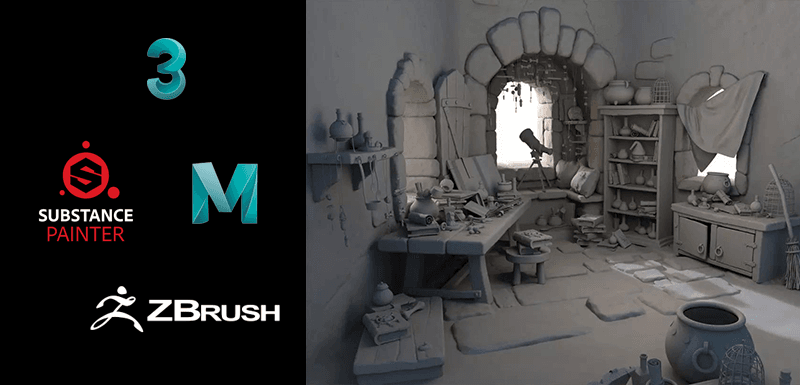
3ds Max Tutorials: Semi-realistic 3D Game Scene Interior Production Sharing (1)
3ds Max Render Farm
Fox Renderfarm, as the best 3ds Max render farm** and cloud rendering services provider in the CG industry, the tutorial we shared for you this time is from the 3D artist Thepoly, on how to use 3ds Max and Maya and other software to make a semi-realistic 3D game scene interior production process.This project uses the standard PBR process, using 3ds Max to complete the basic model building, and determine the object scale. Complete high poly carving in ZBrush, topology in Maya, baking in Marmoset Toolbag 3, Substance Painter to complete the production of PBR materials, and finally use Marmoset Toolbag 3 for rendering.Production processThe production is divided into three parts:ModelingMaterial productionRenderingModelingBefore production, determine what materials, what objects are in the scene, and the overall ratio, and then determine the production order according to the ratio. Most of the scenes are walls and stones and wooden furniture, so they are the key part of the production.Quickly build up their approximate proportions in 3ds Max. Complete the medium polygon modelAfter establishing the proportion of large objects, continue to build down the remaining objects in the scene. And further, enrich the details of the model. There are a lot of repetitive objects, just make a few different shapes. This does not seem to be too repetitive.Taking the above book as an example, many different types have been produced, which can reduce visual duplication.There are two fabrics in the scene, here is a pillow as an example,This product uses the cloth calculation that comes with 3ds Max. The specific process is as follows,Create blocking objects,Create a pillow basic model (the higher the number of segments, the better the simulation effect, but it also stuck).Squash and find the fabric in the modifier,Analog computingFinally, get a simple pillow model. (The folds of the fabric should be sorted out, the above is a simple demonstration. The curtains are the same, MD may have better results)Next, import the model into ZBrush for sculpting.Carving High PolyTake the wall and stone of the house as an example:After importing the medium-surface model into ZBrush, it is because of the irregular shape of the stone. You can use Dynamesh in geometry editing to edit the model.The No.1, No. 2, and No.3 brushes are used for large-scale carving of stones. The No. 4 brush adjusts the shape to prevent insertion. Finally, the No.5 and No.6 brushes flatten some edges and corners to make the structure hard. Thus reflecting the texture of the stone.The big idea of the wall is the same. Finally, use the noise in the surface, adjust the curve and noise ratio, etc. to simulate the graininess of the wall and the stone surface.Finally, add some details such as cracks and bumps to enrich the picture. Use the No. 6 brush mentioned above and press it again to achieve better results. (This part of the production reference is very important)Now follow the best cloud rendering services provider and 3ds Max render farm**, Fox Renderfarm**, to the next part: 3ds Max Tutorials: 3ds Max Tutorials: Semi-realistic 3D Game Scene Interior Production Sharing (2).
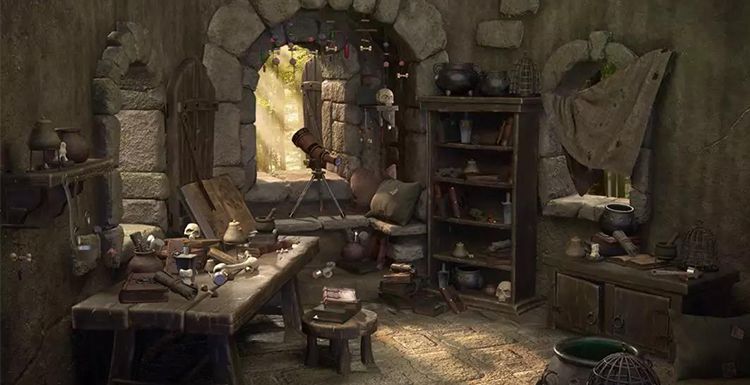
Behind the Scenes: 3D Game Scene
Maya Render Farm
Today, as the leading cloud rendering services provider and 3D render farm, Fox Render****farm will share a production process of a 3D game scene. This project uses the standard PBR process, and uses 3ds Max to complete the basic modeling, determines the proportion of objects. Finish sculpting in ZBrush for high poly, topology in Maya, baking in Marmoset Toolbag 3, finish making PBR materials in Substance Painter, and finally use Marmoset Toolbag 3 for rendering.The production is divided into three parts:ModelingMaterial productionRenderingModelingBefore production, determine what materials, objects, and overall proportions are in the scene, and then determine the production order according to the proportions. Most of the scene in this scene is walls and stones and wooden furniture, so they are the focus of the production.Quickly set up their approximate proportions in 3ds Max.Complete the medium face number modelAfter establishing the proportion of large objects, continue to build the remaining objects in the scene. And further enrich the details of the model. There are a large number of repeated objects, and several different shapes can be made.Taking the above book as an example, many different types have been produced, which can reduce visual repetitions very well.There are two pieces of cloth in the scene. Here we take the pillow as an example,This production uses the cloth calculation that comes with 3ds Max. The specific process is as follows,Create blocking objects:Create a pillow base model (the higher the number of segments, the better the simulation effect),Squash and find the cloth in the modifier,Simulation The end result is a simple pillow model. (The shape of the wrinkles of the fabric should be well organized, and the top is a simple demonstration. Similarly, curtains may have better effects).Finally in 3ds Max medium face model,Next, import the model into ZBrush for sculpting.High Poly sculptureHere is an example of a house's walls and stones:The medium face model was imported into ZBrush because of the irregular shape of the stone. You can use Dynamesh (dynamic mesh) in geometry editing to edit the model.Brushes 1, 2, and 3 are used for large-scale carving of stones. Brush No. 4 adjusts shape to prevent penetration. Finally, brushes 5 and 6 are used to flatten some edges and corners to make the structure hard. Thus reflecting the texture of the stone.The big ideas on the wall are the same. Finally, use the surface noise, adjust the curve, and the noise ratio to simulate the graininess of the wall and stone surface.Finally, add some details such as cracks and bumps to enrich the picture. Use the brush No. 6 mentioned above to suppress it again for better results.Take the wooden table as an example below, first determine the material to be carved, and then look for the corresponding reference picture. Because the wood in the scene is too old, you need to find some pictures of old wood when looking for reference pictures, for example,The sculpting process needs to be combined with actual life, so as to achieve a more realistic effect. In this scene, the wooden table is a little bit decayed, so the edge of the table will not be made into a hard, right-angled structure, so when carving, you can use the brush to make the right-angled portion of the edge more rounded, so reflect the texture you want to express. With appropriate deformation, it can increase the visual impact more vividly (adjust the place with the Move brush a little). The wood in the scene needs to have an old feeling, so cracks are a good way to show that the objects are worn out. At this time, you need to use the reference picture. For example, a crack on a window plate can be carved according to the crack in the reference figure. This can better and more realistically and quickly reflect the material. The final High Poly display,Low polygon model and bakingThe final low-poly model was reduced using ZBrush, and then imported into Maya for final low-poly model production. This can get Low Poly models faster, but the wiring will be relatively less neat. Note that it is important to distinguish between the smooth group and split UV where the angle is close to 90 degrees. The final baking uses Marmoset Toolbag 3.2. MaterialAfter baking all the normals and IDs, import Substance Painter to make the material. It is worth noting that the normals baked in Marmoset Toolbag 3 and Maya use Opengl mode in Substance Painter, and the normals baked in 3ds Max use DirectX mode. After successfully importing, bake the rest of the textures in the texture set-baking model textures.Wall material basic processFirst of all, we make the natural color of the material, and the natural color layer can add filters appropriately to increase the details.Add a dark color and use the Dirt generator. Partially unsatisfactory add a drawing layer to fix it. Add bright colors and color variations to create the approximate effect of wall decay. Here, it is mainly modified by hand-drawn layers. Continue adding color changes and roughness changes. Try to be as close to real effects as possible.Finally, you can add an adjustment layer to increase the brightness. The material made in Substance Painter should be imported into Marmoset Toolbag 3 and the brightness will be a bit lower than that seen in Substance Painter. The wall material production is complete.And because the furniture in the scene should reflect the old feeling, the overall color is grayish and dark. The damage and abrasion are to reflect the original color of the wood, so the color saturation will be higher than the surface color.3. RenderingFinally, before importing into Marmoset Toolbag 3, you need to set up the lighting, the main light establishes the main light, and the auxiliary light supplements the light source to maintain the brightness of the picture. And to turn on high DPI and oversampling, turn on GI global illumination and AO environment occlusion.The explanation of the production process of a 3D game scene is over. We hope this sharing will help you. Fox Render****farm is an excellent CPU &x26; GPU render farm and best cloud rendering services provider, so if you need to find a render farm, why not try Fox Render****farm, which is offering a $25 trial for new users.Source: Thepoly
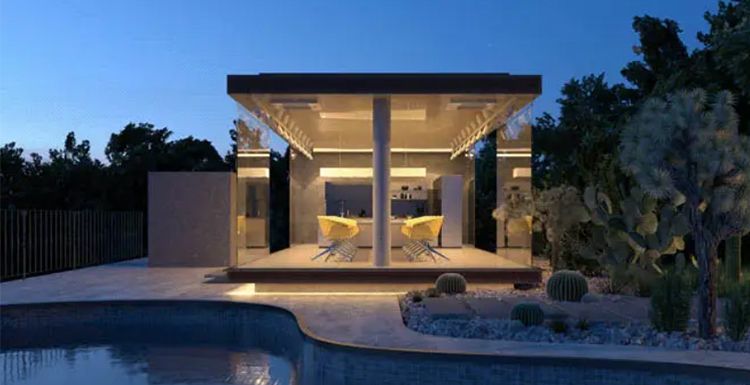
3ds Max Tutorial: Analysis of Building Rendering in Dusk
V-Ray for 3ds Max
Fox Renderfarm, as a leading archive render farm** and cloud rendering services provider, brings to you the analysis of architectural renderings at dusk made with 3ds Max and V-Ray. An outstanding works include two aspects: one is the picture effect, including color matching and composition of the picture. This is the key, as well as professional knowledge and photography skills, and the level of appreciation of photographic works. Another aspect is technology, which can use various tools. This is extremely critical. You must fully understand what to do and how to do it. If you can balance these two aspects well, you can make effective worksSoftware used3ds Max, V-Ray, Solid Rocks, Forest Pack Pro, Siger Shaders, Photoshop Cs6, Red Giant Magic Bullet and Nik Software.Reference pictureBefore the production of the artwork, the key step is to find the correct reference photos, prepare the reference for the future atmosphere, lighting and post-production, and try to approximate the reference photos.Basic SettingsLinear Workflow is a highly recommended way of working, the basic settings are shown in the figure,ModelingAll models are based on flat design drawings. The basic model of this figure is made using Autocad and then imported into 3ds Max. The details after that are added based on your own imagination without any reference.The terrain and surrounding environment are modeled using Forest Pack Pro, which can make stones, grass, and trees with a random and natural feel. The plants on the side of the building should be arranged according to the layout indicated in the drawings of the landscape design.Materials and texturingAll textures in the scene use the Siger material as the base texture. Based on this texture, the texture effect is made according to the needs of the project. Keep the texture as simple as possible, using only some basic channels, such as Diffuse Map, Specular Map, Bump Map, etc. It is produced according to the reference in the reference. Using the texture library is a time-saving method. You don't need to spend a lot of time to make each texture from beginning to end. You can make some adjustments on the basis of the texture library to meet the requirements of the project.The material of the swimming pool is a little tricky in refraction on the water surface, and the final result is very close to the reference picture.LightingHDRI lighting technology is one of the very useful ways to achieve real effects, which can get very realistic and accurate lighting effects. When setting the position of the main light source sun, you can have several options, place it on one side, use warm colors, and then set a transition light source from warm to cold and light to dark. This transition light source can give with a more natural effect on the picture, the light won't appear too flat.In terms of outdoor light sources, the Dome light plus HDRI method uses Peter Guthrie's PG SKIES 2028 for the texture, and the indoor light uses a standard Target combined with V-Ray shadows and V-Ray surface light to match the IES. The small downlight on the ceiling uses V-Ray light to simulate the feel of a light bulb.RenderingThis part is a bottleneck for many people. How to set a set of effective parameters? A very old but extremely useful plugin for Solid rocks is used here. Solid Rocks has a very useful set of V-Ray parameters. The interface is very simple. As long as you know V-Ray, you can understand it. Basically it covers all the parameters needed. It is very convenient and quick to use. For those who are not interested in going deeper V-Ray's parameters are very suitable for those who influence the rendering process behind the scenes. Here are the very basic parameters.In V-Ray Elements, it is required to be able to control some effects such as light and dark contrast, reflection and refraction, etc. The V-Ray Raw Global Illumination channel has been added for better post-control. Finally, if you want the effect to be realistic, especially if your local machine fails to meet the rendering hardware requirements, often when the machine crashes, it is recommended that you use a cloud rendering services to render.Post-productionThe beginning of a work starts from the post-production period, and the earliest reference picture found determines the effect of the final artwork.In the post-production processing, try to keep everything simple, use the V-Ray Raw Global Illumination channel, change the layer to Hue / Saturation overlay mode, and adjust it to indoor without exposure. Then add some texture on the left cement floor.So far, everything has been made with 3ds Max and V-Ray. If you need to adjust the color, you can use the Selective Color adjustment layer, because only this layer can make every color in the scene controllable. The principle is keep the effect of the transition light in the scene, because the four colors in this layer basically cover all the colors in the scene, so this provides the flexibility of color control of this scene, which can well harmonize various colors and tones.The color balance is changeable, so a good reference picture is necessary, as long as you try to imitate the effect in that photo, the trick is actually to find a photo close to the existing rendering effect as a reference, so for post-processing the process is relatively easy.You can also use Hue / Saturation or Curves with this Selective Color adjustment layer.Observe the artwork with your own eyes and make adjustments, such as the halo of the light bulb, you can simply draw a halo around the light bulb to simulate the temperature of the light bulb (the light bulb has no color, only the temperature). This halo can be made a little bit The feeling of exposure.There are two main plugins used in the final step: Magic Bullet Photolooks and Nik Software. The main purpose is to better integrate the adjustments made before, so that the colors, brightness, saturation and saturation in the picture are more natural.As a night scene, you must be aware of the characteristics of the light at night. In photography technology, you need to reduce the shutter speed to get more light through the lens, and observe more photographic works to simulate the characteristics of such photos to achieve realistic effects.Because real photos do not have anti-aliasing, you can use Analog Efex Pro 2 to simulate some graininess and do a little blurring, so that the picture will look more like a real photo and more natural.Hue is a difficult topic to define. It is definitely wrong in real photography, but in the post-production of PS adjustment, this hue technology is used everywhere because the human eye is seeing a picture with a color tone. Unconscious people will think this is a photo, so I will use this feature to use this color tone technology in PS. The suggestion is not to use it excessively, but to control it when using it so as not to cause unnatural effects.The final step is to use High Pass Filter to sharpen the picture, the final renderings,Above is the analysis of architectural renderings at dusk made with 3ds Max and V-Ray brought by Fox Renderfarm**. As the leading cloud rendering services provider and best 3ds Max render farm**, Fox Renderfarm** continues to bring the latest news about 3D art. We hope you can learn something from our article.
Recommended reading
Top 9 Best And Free Blender Render Farms of 2025
2024-12-30
What is Jibaro? Reveal the Story and Techniques Behind the Production of Jibaro "Love, Death & Robots"
2025-11-03
Top 10 Free And Best Cloud Rendering Services in 2026
2025-12-26
9 Best & Free 3D Rendering Software for Architects & Designers
2025-12-08
Top 8 After Effects Render Farm Recommended of 2025
2025-02-10
Easy Cel Shading Tutorial for Cartoon in Blender Within 2 Minutes
2025-11-26
Shocked! The Secret Behind Using 3D to Make 2D Animation was Revealed!
2026-01-06
How to Render High-quality Images in Blender
2024-12-04
Partners




